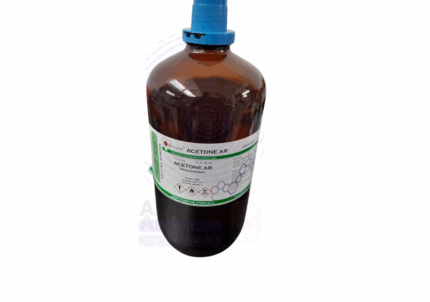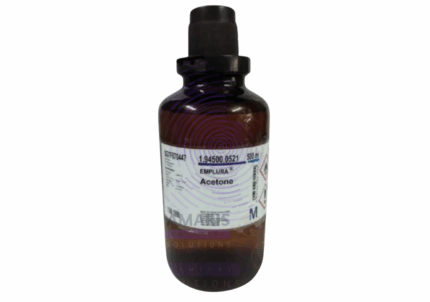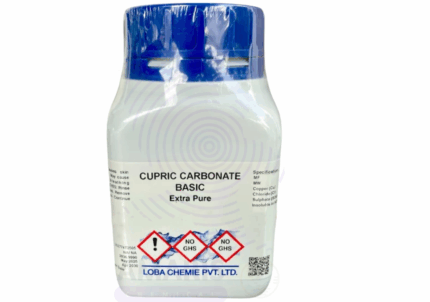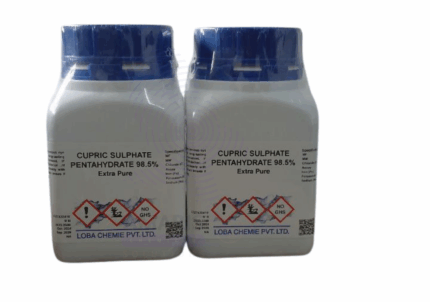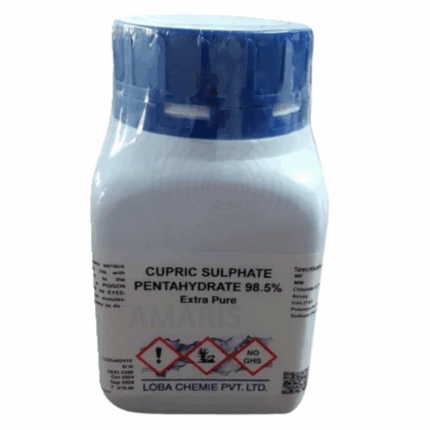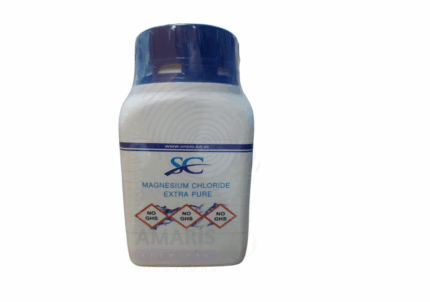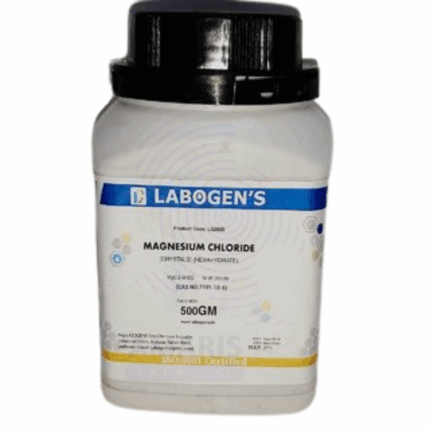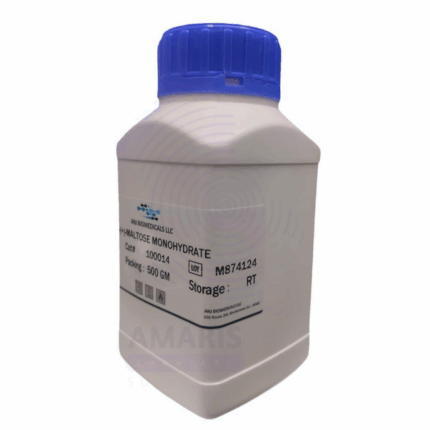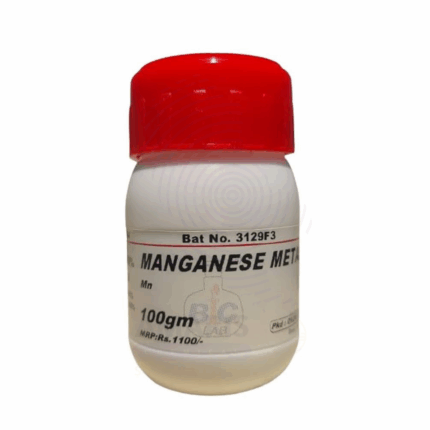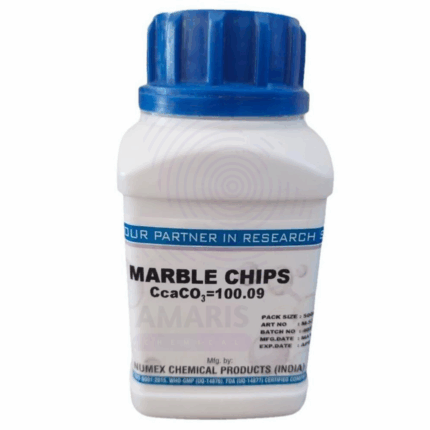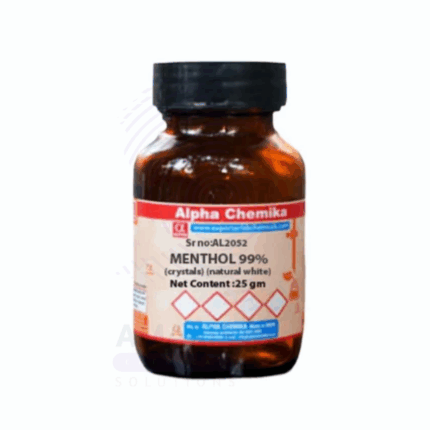
Polydextrose Extra Pure
$ 15.89 Original price was: $ 15.89.$ 15.78Current price is: $ 15.78.
Polydextrose Extra Pure is a premium-grade synthetic polymer of glucose, widely used as a dietary fiber, bulking agent, and low-calorie carbohydrate substitute in food, pharmaceutical, and nutraceutical applications. Its high purity ensures suitability for laboratory, formulation, and quality-sensitive uses.
This compound is valued for its excellent solubility, neutral taste, and stability across a wide pH range and temperatures. It is commonly incorporated into sugar-free, low-calorie, or high-fiber food products such as baked goods, beverages, and nutritional supplements. In pharmaceutical formulations, it may serve as an excipient or filler in tablets and capsules.
Polydextrose is generally recognized as safe (GRAS) and well-tolerated, though excessive intake may have a mild laxative effect. It should be stored in a cool, dry place, sealed tightly to avoid moisture absorption.
Polydextrose Extra Pure
PRIMARY USES
- Food & Beverage Industry:
- Used as a low-calorie bulking agent and dietary fiber in low-sugar, sugar-free, or reduced-calorie products.
- Common in baked goods, candies, cereals, beverages, and dairy-based products.
- Nutritional Supplements:
- Added to health and wellness products to increase fiber content and promote digestive health.
SECONDARY USES
- Pharmaceutical Industry:
- Used as an inert filler or excipient in tablets and capsules.
- Helps improve mouthfeel and texture in chewable medications or nutritional lozenges.
- Cosmetics & Personal Care:
- Occasionally incorporated as a humectant or skin-conditioning agent in lotions and creams.
- Weight Management Products:
- Incorporated in products targeting calorie reduction, owing to its low glycemic index and prebiotic properties.
- Clinical Nutrition:
- Included in enteral nutrition formulas for patients needing additional fiber without sugar intake.
1. Basic Identification Attributes
- Chemical Name: Polydextrose
- CAS Number: 68424-04-4
- HS Code: 3913.90.00
- Molecular Formula: (C₆H₁₀O₅)ₙ (polymer of glucose)
- Synonyms:
- Poly-D-glucose
- Glucose polymer
- E1200 (as food additive code)
2. Physical & Chemical Properties
- Physical State: Solid (powder or granules)
- Color & Odor: White to off-white; slight odor or odorless
- Boiling Point & Melting Point:
- Decomposes on heating
- Softens around 150–160 °C
- Density/Specific Gravity: ~1.4 g/cm³
- Solubility:
- Soluble in water
- Insoluble in most organic solvents
- pH Level: ~3.5–5.5 (in 10% aqueous solution)
- Vapor Pressure & Volatility: Not volatile
- Flash Point: Not applicable
- Autoignition Temperature: Not applicable
- Viscosity: Not applicable (solid form)
3. Safety & Hazard Attributes
- Hazard Class (GHS Classification):
- Not classified as hazardous
- NFPA Ratings:
- Health: 0
- Flammability: 1
- Reactivity: 0
- Exposure Limits:
- Not established (generally regarded as safe - GRAS)
- Reactivity:
- Stable under normal conditions
- May degrade when heated to high temperatures
4. Storage & Handling Attributes
- Storage Conditions:
- Store in a cool, dry, and well-ventilated area
- Protect from moisture and high temperatures
- Incompatible Materials:
- Strong oxidizers
- Container Type:
- Sealed food-grade plastic or fiber containers
- Shelf Life & Expiration Date:
- Typically 2–3 years when stored properly
- Special Handling Requirements:
- Avoid inhaling dust
- Use protective gloves and goggles when handling large quantities
5. Regulatory & Compliance Attributes
- Regulatory Status:
- FDA GRAS (Generally Recognized As Safe)
- Approved by EFSA (E1200), Codex, and other international bodies as a food additive
- Hazard Symbols (GHS Pictograms):
- None required
- Transportation Restrictions:
- Not regulated for transport
- Waste Disposal Method:
- Dispose in accordance with local regulations
- Considered non-hazardous waste
6. Environmental & Health Impact
- Ecotoxicity:
- Not toxic to aquatic or terrestrial organisms
- Persistence in Environment:
- Biodegradable
- Carcinogenicity/Mutagenicity:
- Not classified as carcinogenic or mutagenic
- Biodegradability:
- Readily biodegradable in the environment
SAFETY PRECAUTIONS
Personal Protective Equipment (PPE):
- Wear protective gloves (e.g., nitrile or latex).
- Use safety goggles to prevent eye contact.
- Wear a lab coat or apron to avoid skin contamination.
- Use a dust mask if handling powdered form in bulk.
Handling:
- Avoid creating dust or inhaling particulate matter.
- Handle in accordance with good industrial hygiene and safety practices.
- Wash hands thoroughly after handling.
- Avoid contact with eyes and prolonged skin exposure.
Storage:
- Store in a cool, dry, well-ventilated place.
- Keep the container tightly sealed to prevent moisture absorption.
- Store away from strong oxidizing agents.
FIRST AID MEASURES
Inhalation:
- Move to fresh air.
- If breathing is difficult, seek medical attention.
Skin Contact:
- Wash with soap and water.
- If irritation occurs, seek medical advice.
Eye Contact:
- Rinse immediately with plenty of water for at least 15 minutes.
- Seek medical attention if irritation persists.
Ingestion:
- Rinse mouth with water.
- Not considered hazardous in small quantities, but consult a physician if large amounts are swallowed or if discomfort occurs.
FIRE FIGHTING MEASURES
Flammability:
- Not classified as flammable, but may burn at high temperatures.
Extinguishing Media:
- Use water spray, dry chemical, foam, or carbon dioxide.
Hazardous Combustion Products:
- May emit carbon monoxide (CO) and carbon dioxide (CO₂) when burned.
Firefighter Protection:
- Use self-contained breathing apparatus (SCBA) and full protective gear when fighting fires involving large quantities.


 Preservatives(food)
Preservatives(food) Flavor Enhancers
Flavor Enhancers Acidulants
Acidulants Sweeteners
Sweeteners Antioxidants
Antioxidants Colorants(food)
Colorants(food) Nutraceutical Ingredients (food)
Nutraceutical Ingredients (food) Nutrient Supplements
Nutrient Supplements Emulsifiers
Emulsifiers
 Collectors
Collectors Dust Suppressants
Dust Suppressants Explosives and Blasting Agents
Explosives and Blasting Agents Flocculants and Coagulants
Flocculants and Coagulants Frothers
Frothers Leaching Agents
Leaching Agents pH Modifiers
pH Modifiers Precious Metal Extraction Agents
Precious Metal Extraction Agents
 Antioxidants(plastic)
Antioxidants(plastic) Colorants (Pigments, Dyes)
Colorants (Pigments, Dyes) Fillers and Reinforcements
Fillers and Reinforcements Flame Retardants
Flame Retardants Monomers
Monomers Plasticizers
Plasticizers Polymerization Initiators
Polymerization Initiators Stabilizers (UV, Heat)
Stabilizers (UV, Heat)
 Antifoaming Agents
Antifoaming Agents Chelating Agents
Chelating Agents Coagulants and Flocculants
Coagulants and Flocculants Corrosion Inhibitors
Corrosion Inhibitors Disinfectants and Biocides
Disinfectants and Biocides Oxidizing Agents
Oxidizing Agents pH Adjusters
pH Adjusters Scale Inhibitors( water)
Scale Inhibitors( water)
 Antioxidants(cosmetic)
Antioxidants(cosmetic) Emollients
Emollients Fragrances and Essential Oils
Fragrances and Essential Oils Humectants
Humectants Preservatives
Preservatives Surfactants(cosmetic)
Surfactants(cosmetic) Thickeners
Thickeners UV Filters
UV Filters
 Fertilizers
Fertilizers Soil Conditioners
Soil Conditioners Plant Growth Regulators
Plant Growth Regulators Animal Feed Additives
Animal Feed Additives Biostimulants
Biostimulants Pesticides (Herbicides, Insecticides, Fungicides)
Pesticides (Herbicides, Insecticides, Fungicides)
 Active Pharmaceutical Ingredients (APIs)
Active Pharmaceutical Ingredients (APIs) Excipients
Excipients Solvents(pharmaceutical)
Solvents(pharmaceutical) Antibiotics
Antibiotics Antiseptics and Disinfectants
Antiseptics and Disinfectants Vaccine Adjuvants
Vaccine Adjuvants Nutraceutical Ingredients (pharmaceutical)
Nutraceutical Ingredients (pharmaceutical) Analgesics & Antipyretics
Analgesics & Antipyretics
 Analytical Reagents
Analytical Reagents Solvents(lab)
Solvents(lab) Chromatography Chemicals
Chromatography Chemicals Spectroscopy Reagents
Spectroscopy Reagents microbiology-and-cell-culture-reagents
microbiology-and-cell-culture-reagents Molecular Biology Reagents
Molecular Biology Reagents Biochemical Reagents
Biochemical Reagents Inorganic and Organic Standards
Inorganic and Organic Standards Laboratory Safety Chemicals
Laboratory Safety Chemicals Specialty Laboratory Chemicals(Special Laboratory Equipment)
Specialty Laboratory Chemicals(Special Laboratory Equipment)
 Demulsifiers
Demulsifiers Hydraulic Fracturing Fluids
Hydraulic Fracturing Fluids Scale Inhibitors(oil)
Scale Inhibitors(oil) Surfactants(oil)
Surfactants(oil) Drilling Fluids
Drilling Fluids
 Dyes and Pigments
Dyes and Pigments Bleaching Agents
Bleaching Agents Softening Agents
Softening Agents Finishing Agents
Finishing Agents Antistatic Agents
Antistatic Agents
 Admixtures
Admixtures Waterproofing Agents
Waterproofing Agents Sealants and Adhesives
Sealants and Adhesives Curing Compounds
Curing Compounds Concrete Repair Chemicals
Concrete Repair Chemicals Anti-Corrosion Coatings
Anti-Corrosion Coatings
 Surfactants(cleaning)
Surfactants(cleaning) Builders
Builders Enzymes
Enzymes Solvents (Cleaning)
Solvents (Cleaning) Fragrances
Fragrances
 Electronic Chemicals
Electronic Chemicals Catalysts
Catalysts Lubricants
Lubricants Photographic Chemicals
Photographic Chemicals Refrigerants
Refrigerants Automotive chemicals
Automotive chemicals Pyrotechnic Chemicals
Pyrotechnic Chemicals
 Biodegradable Surfactants
Biodegradable Surfactants Bio-based Solvents
Bio-based Solvents Renewable Polymers
Renewable Polymers Carbon Capture Chemicals
Carbon Capture Chemicals Wastewater Treatment Chemicals
Wastewater Treatment Chemicals
 Pigments
Pigments Solvents(paint)
Solvents(paint) Specialty Coatings
Specialty Coatings Binders/Resins
Binders/Resins Additives
Additives Driers
Driers Anti-Corrosion Agents
Anti-Corrosion Agents Functional Coatings
Functional Coatings Application-Specific Coatings
Application-Specific Coatings
 Fresh Herbs
Fresh Herbs Ground Spices
Ground Spices Whole Spices
Whole Spices Spice Blends
Spice Blends Dried Herbs
Dried Herbs
 Leavening Agents
Leavening Agents Dough Conditioners
Dough Conditioners Flour Treatments
Flour Treatments Fat Replacers
Fat Replacers Decoratives
Decoratives Preservatives(baking)
Preservatives(baking)
 Plasticizers & Softeners
Plasticizers & Softeners Reinforcing Agents
Reinforcing Agents Adhesion Promoters
Adhesion Promoters Vulcanizing Agents
Vulcanizing Agents Antidegradants
Antidegradants Blowing Agents
Blowing Agents Fillers & Extenders
Fillers & Extenders Accelerators & Retarders
Accelerators & Retarders


